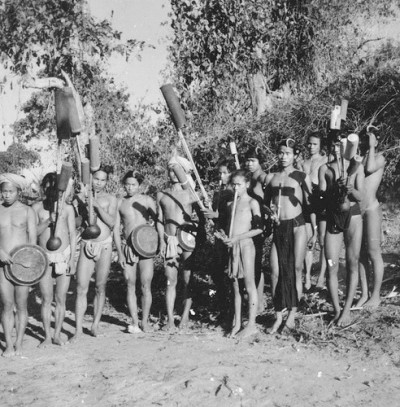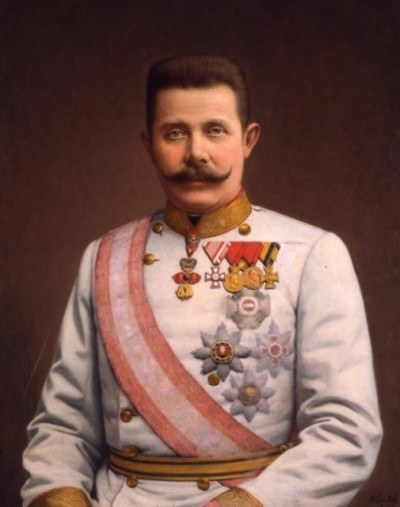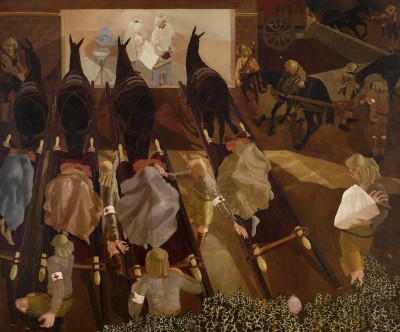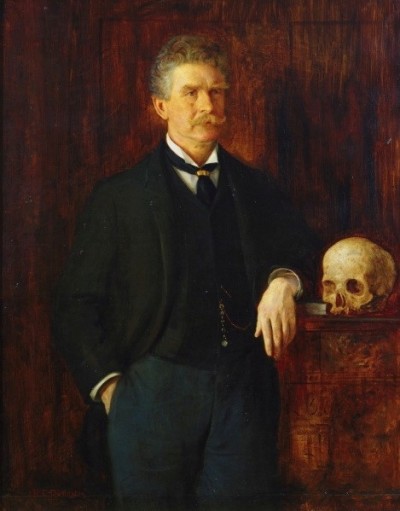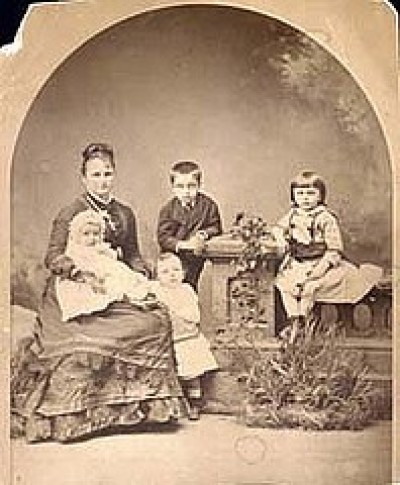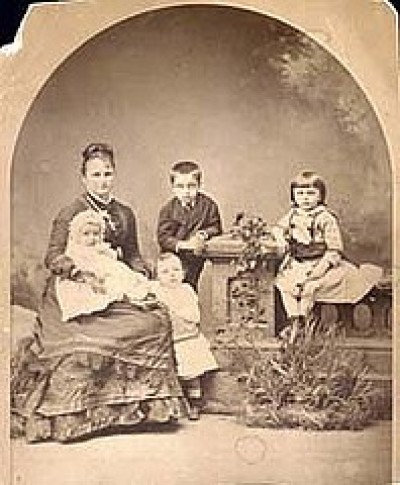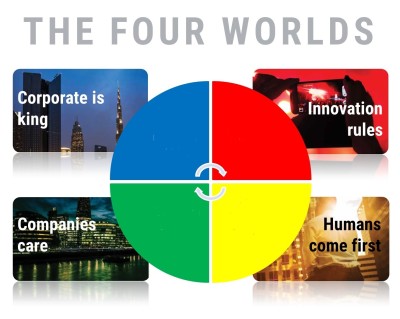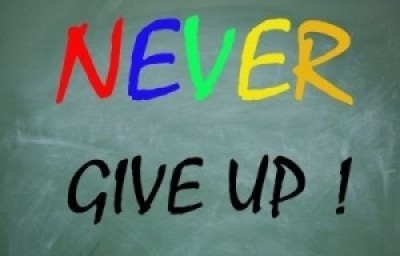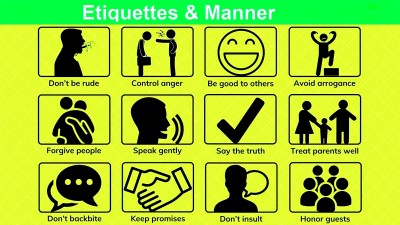Course description
The Indigenous Peoples of Bangladesh
Noahhoward / CC BY-SA (https://creativecommons.org/licenses/by-sa/4.0)Over the past decade or even longer, there has been a great deal of progress in making roads, building houses and apartment blocks, improving sanitation and other essentials for healthy living, and providing access to education. Internet provision has increased as well. This has been no easy task as the country has an ever-growing population with ever-greater needs but limited resources.
Yet, indigenous peoples who live mainly in the Chittagong Hill Tracts and in Sylhet (although, of course, you can find them in Mymensingh and Rajshahi as well as Noakhali and Dhaka) are disadvantaged compared to their Bengali-origin fellow citizens. There might be many reasons for this, such as the fact that many tribes people belong to remote agricultural communities, which are not easily reachable by road, and so they are unable to access good educational or employment opportunities. It’s easy to argue that the government does not make the Hill Tracts a priority for infrastructural development, but if it does so, the increased traffic upsets the ecological balance in these communities as cars will start to disturb and destroy wildlife as well as local cultures and customs and pollute the environment.
BANDARBANAnother point is that there are language difficulties which indigenous people suffer because their first language is not Bangla and so they cannot often excel in examinations, like SSC and HSC. It’s hard for them to get places at universities and, later, much-needed well-paid jobs if they cannot easily prepare for these at school. Yet, perhaps the most important reason why Bangladesh became an independent nation was because of West Pakistan’s attempts to make Urdu the only official language of the country. The language martyrs died to keep Bangla alive and at the heart of Bengali identity. As such, the learning and teaching of the language have held a special place in this country. Besides, isn’t it true that many European countries now give language tests to immigrants who wish to live in their countries? We are just asking for trouble if people cannot communicate fluently in the major language of the country where they live. But is there space for indigenous languages to be taught as well, for their songs and literature to be promoted?
HILL CUTTING : Anup Sadi / CC BY-SA (https://creativecommons.org/licenses/by-sa/4.0)And, of course, there are more and more Bengalis given or just occupying land in traditionally tribal areas, often cutting down trees and even hills to build their new homes. We all know that this causes mudslides and unnecessary deaths. It’s wrong to blame people for grabbing land when they are living in tin shacks in slums or even on the streets. But, perhaps worse than this is the fact that the areas are starting to lose their old identities.
Finally, some say that Bengalis are less tolerant these days of people who do not share their Islamic views in a nation which is increasingly religious. People with different faiths are leaving the country in greater numbers. After all, in 1971, 30% of the Bangladeshi population was Hindu but now the proportion has fallen to single figures.
The situation is, of course, very complicated but there are excellent reasons why we should try to preserve the traditions and customs, the languages and the rituals of the indigenous peoples. First of all, their languages are unique. After all, if words help to shape our thoughts, then what will happen to those thoughts if the words to express them vanish. We all know, for example, that there are many things in Bangla which we cannot precisely translate into English. Somehow the meaning gets lost in translation. That’s why Rabindranath Tagore never sounds as good in French, English or Japanese as he does in Bangla. So, what will happen to the unique perspectives of indigenous peoples if the young no longer learn to read, write or even speak their mother tongue?
TRADITIONAL MRU HOUSE : Md.Kabirul Islam / CC BY-SA (https://creativecommons.org/licenses/by-sa/3.0)Next, the indigenous peoples have cultures very different from the Bengali one. Their ceremonies are different, their calendars, their clothes and food. The 2011 census counted twenty-seven different tribes in Bangladesh. This is not surprising, of course, as the Mramas and Mrus originally travelled to this area from Myanmar, while the Manipuris and Tripuras come from the Indian seven-sister states. Others journeyed from central India to make lives here. And all this migration happened centuries before Pakistan split from India in 1947 and Bangladesh from Pakistan in 1971.
compared to their Bengali-origin fellow citizens. There might be many reasons for this, such as the fact that many tribes people belong to remote agricultural communities, which are not easily reachable by road, and so they are unable to access good educational or employment opportunities. It’s easy to argue that the government does not make the Hill Tracts a priority for infrastructural development, but if it does so, the increased traffic upsets the ecological balance in these communities as cars will start to disturb and destroy wildlife as well as local cultures and customs and pollute the environment.
BANDARBANAnother point is that there are language difficulties which indigenous people suffer because their first language is not Bangla and so they cannot often excel in examinations, like SSC and HSC. It’s hard for them to get places at universities and, later, much-needed well-paid jobs if they cannot easily prepare for these at school. Yet, perhaps the most important reason why Bangladesh became an independent nation was because of West Pakistan’s attempts to make Urdu the only official language of the country. The language martyrs died to keep Bangla alive and at the heart of Bengali identity. As such, the learning and teaching of the language have held a special place in this country. Besides, isn’t it true that many European countries now give language tests to immigrants who wish to live in their countries? We are just asking for trouble if people cannot communicate fluently in the major language of the country where they live. But is there space for indigenous languages to be taught as well, for their songs and literature to be promoted?
HILL CUTTING : Anup Sadi / CC BY-SA (https://creativecommons.org/licenses/by-sa/4.0)And, of course, there are more and more Bengalis given or just occupying land in traditionally tribal areas, often cutting down trees and even hills to build their new homes. We all know that this causes mudslides and unnecessary deaths. It’s wrong to blame people for grabbing land when they are living in tin shacks in slums or even on the streets. But, perhaps worse than this is the fact that the areas are starting to lose their old identities.
Finally, some say that Bengalis are less tolerant these days of people who do not share their Islamic views in a nation which is increasingly religious. People with different faiths are leaving the country in greater numbers. After all, in 1971, 30% of the Bangladeshi population was Hindu but now the proportion has fallen to single figures.
The situation is, of course, very complicated but there are excellent reasons why we should try to preserve the traditions and customs, the languages and the rituals of the indigenous peoples. First of all, their languages are unique. After all, if words help to shape our thoughts, then what will happen to those thoughts if the words to express them vanish. We all know, for example, that there are many things in Bangla which we cannot precisely translate into English. Somehow the meaning gets lost in translation. That’s why Rabindranath Tagore never sounds as good in French, English or Japanese as he does in Bangla. So, what will happen to the unique perspectives of indigenous peoples if the young no longer learn to read, write or even speak their mother tongue?
TRADITIONAL MRU HOUSE : Md.Kabirul Islam / CC BY-SA (https://creativecommons.org/licenses/by-sa/3.0)Next, the indigenous peoples have cultures very different from the Bengali one. Their ceremonies are different, their calendars, their clothes and food. The 2011 census counted twenty-seven different tribes in Bangladesh. This is not surprising, of course, as the Mramas and Mrus originally travelled to this area from Myanmar, while the Manipuris and Tripuras come from the Indian seven-sister states. Others journeyed from central India to make lives here. And all this migration happened centuries before Pakistan split from India in 1947 and Bangladesh from Pakistan in 1971.  According to the 2011 census, there were more than two million citizens from indigenous tribes in Bangladesh, a number that has certainly increased since then.
Let us take a look at one of these tribes, its histories and customs, religions and way of farming. You can find articles on the website about other indigenous tribes too.
The Mru (or Mro) have lived in the Chittagong Hill Tracts for centuries, although they cannot be sure exactly for how long. Outside Bangladesh, about 20,000 are found in West Bengal and more than that number in Chin and Rakine states in Myanmar. There are, perhaps 25,000 living in the CHT today, mainly around Bandarban and Rangamati.
MRU MEN, 1950Most Mru make a living from a type of farming called ‘taungya’. This means cutting down trees, burning their roots, planting crops and, after the harvest, re-planting saplings, a system originally introduced in the early nineteenth century by the British as a sustainable form of agriculture. The main crops of the Mru are: tobacco, cotton, cane, paddy and bamboo. Each stage of the farming process is celebrated with a sacrifice of chickens, goats, or pigs, where blood is sprinkled on the ground and in the river. During these celebrations, the villages are cut off from the surrounding areas so that visitors do not share in the meat cooked. If outsiders enter the village at these times, they have to pay a fine to cover the costs of the feast.
The Mru have their own spoken language, similar to the one spoken by the Rakine tribe in Arakan province of Myanmar – which is defined by UNESCO as ‘critically endangered’ – but no script. There is an interesting myth about why this is so.
THE CHIASOTOPI FESTIVAL : Marmakong / CC BY-SA (https://creativecommons.org/licenses/by-sa/4.0)Long, long ago, God called on the Mru to visit him to collect the letters of their language but, as they were all at work, they sent a cow. Unfortunately, the animal swallowed the tablet the letters were written on. As a punishment, the Mru hit the cow in the mouth, breaking all its teeth on the upper jaw – the reason why cows do not have upper teeth even today – and killed it with a spear. This myth is still celebrated in a ceremony, called Chiasotopi, where the villagers dance all night and then spear a cow, which they cook and eat. (By the way, the Mru language was written both in Bangla and Roman script in the 1980s and 80% of the people are now literate in these manufactured scripts.)
There are different rituals for birth, marriage and death among the Mru as well. When a child is born, four short bamboo sticks are placed on the bank of the river. A chicken is then killed and its blood poured over the bamboo as an offering to the nats, the spirits that look after the Mru and live under their homes. The chicken is not eaten afterwards but thrown away.
Mru_children_eating_in_a_traditional_home.jpg (540×360)Marriage is again different from the usual Bengali practice. A boy chooses a girl, discusses his choice with his father and then, together, they visit the home of the girl he likes. They take chickens, a dagger and a spear with them. The father of the girl speaks to the boy and then asks his daughter’s opinion of the match. If she agrees, a dowry is set, which the boy’s parents cannot negotiate. If they reach agreement, the girl’s family kills a pig and cooks pork along with the chickens brought by the groom. However, the boy’s family does not eat the chicken and the girl’s don’t touch the pork. The guests remain three days and nights.
If, however, the young man and his loved one do not get agreement and run off together, they later return and the boy’s family negotiates a dowry. They do not stay overnight though. They simply take the girl away with them.
Finally, funerals are special affairs. The Mru place their dead in brightly painted bamboo coffins and cremate them. After the fire has died, the remaining bone parts are collected and stored in the village for two or three months before they are put in a special box near where the cremation took place. If, however, a person dies of an infectious disease, she is buried without ceremony.
But what do the Mru believe in? The most popular religion is Buddhism, but this is followed by one that they created for themselves as recently as 1984, called Krama. This is a synthesis of the teachings of Hinduism, Christianity and Buddhism. The holy book of Krama is ReyungKhiti, which describes good living and behavior.
PLAYING THE PLOONG : Astrothomas / CC BY (https://creativecommons.org/licenses/by/3.0)But if it surprises you that the Mru simply made up their own religion just a few decades ago, you’ll probably also be shocked to hear that they have no chief and no social class. Theirs is a society without any social rank. That must be a very strange experience for Bangladeshis where rickshaw pullers and cleaners are treated almost as a different species by the rich.
Finally, the Mru have a musical instrument which is unique to their tribe. It is called a ploong and is a sort of mouth organ or harmonica. It has a number of bamboo pipes and so can produce a
According to the 2011 census, there were more than two million citizens from indigenous tribes in Bangladesh, a number that has certainly increased since then.
Let us take a look at one of these tribes, its histories and customs, religions and way of farming. You can find articles on the website about other indigenous tribes too.
The Mru (or Mro) have lived in the Chittagong Hill Tracts for centuries, although they cannot be sure exactly for how long. Outside Bangladesh, about 20,000 are found in West Bengal and more than that number in Chin and Rakine states in Myanmar. There are, perhaps 25,000 living in the CHT today, mainly around Bandarban and Rangamati.
MRU MEN, 1950Most Mru make a living from a type of farming called ‘taungya’. This means cutting down trees, burning their roots, planting crops and, after the harvest, re-planting saplings, a system originally introduced in the early nineteenth century by the British as a sustainable form of agriculture. The main crops of the Mru are: tobacco, cotton, cane, paddy and bamboo. Each stage of the farming process is celebrated with a sacrifice of chickens, goats, or pigs, where blood is sprinkled on the ground and in the river. During these celebrations, the villages are cut off from the surrounding areas so that visitors do not share in the meat cooked. If outsiders enter the village at these times, they have to pay a fine to cover the costs of the feast.
The Mru have their own spoken language, similar to the one spoken by the Rakine tribe in Arakan province of Myanmar – which is defined by UNESCO as ‘critically endangered’ – but no script. There is an interesting myth about why this is so.
THE CHIASOTOPI FESTIVAL : Marmakong / CC BY-SA (https://creativecommons.org/licenses/by-sa/4.0)Long, long ago, God called on the Mru to visit him to collect the letters of their language but, as they were all at work, they sent a cow. Unfortunately, the animal swallowed the tablet the letters were written on. As a punishment, the Mru hit the cow in the mouth, breaking all its teeth on the upper jaw – the reason why cows do not have upper teeth even today – and killed it with a spear. This myth is still celebrated in a ceremony, called Chiasotopi, where the villagers dance all night and then spear a cow, which they cook and eat. (By the way, the Mru language was written both in Bangla and Roman script in the 1980s and 80% of the people are now literate in these manufactured scripts.)
There are different rituals for birth, marriage and death among the Mru as well. When a child is born, four short bamboo sticks are placed on the bank of the river. A chicken is then killed and its blood poured over the bamboo as an offering to the nats, the spirits that look after the Mru and live under their homes. The chicken is not eaten afterwards but thrown away.
Mru_children_eating_in_a_traditional_home.jpg (540×360)Marriage is again different from the usual Bengali practice. A boy chooses a girl, discusses his choice with his father and then, together, they visit the home of the girl he likes. They take chickens, a dagger and a spear with them. The father of the girl speaks to the boy and then asks his daughter’s opinion of the match. If she agrees, a dowry is set, which the boy’s parents cannot negotiate. If they reach agreement, the girl’s family kills a pig and cooks pork along with the chickens brought by the groom. However, the boy’s family does not eat the chicken and the girl’s don’t touch the pork. The guests remain three days and nights.
If, however, the young man and his loved one do not get agreement and run off together, they later return and the boy’s family negotiates a dowry. They do not stay overnight though. They simply take the girl away with them.
Finally, funerals are special affairs. The Mru place their dead in brightly painted bamboo coffins and cremate them. After the fire has died, the remaining bone parts are collected and stored in the village for two or three months before they are put in a special box near where the cremation took place. If, however, a person dies of an infectious disease, she is buried without ceremony.
But what do the Mru believe in? The most popular religion is Buddhism, but this is followed by one that they created for themselves as recently as 1984, called Krama. This is a synthesis of the teachings of Hinduism, Christianity and Buddhism. The holy book of Krama is ReyungKhiti, which describes good living and behavior.
PLAYING THE PLOONG : Astrothomas / CC BY (https://creativecommons.org/licenses/by/3.0)But if it surprises you that the Mru simply made up their own religion just a few decades ago, you’ll probably also be shocked to hear that they have no chief and no social class. Theirs is a society without any social rank. That must be a very strange experience for Bangladeshis where rickshaw pullers and cleaners are treated almost as a different species by the rich.
Finally, the Mru have a musical instrument which is unique to their tribe. It is called a ploong and is a sort of mouth organ or harmonica. It has a number of bamboo pipes and so can produce a surprising variety of sounds!
There is much more than a just a few hundred words can explain about the Mru, but even from this very brief description, it should be clear that theirs is a unique culture with its own language and even a synthetic religion. It would be a sad, sad thing for the Mru to disappear from Bangladeshi culture and, with them, their stories and rituals.
If you want to watch some videos on this topic, you can click on the links to YouTube videos below.
If you want to answer questions on this article to test how much you understand, you can click on the green box: Finished Reading?
Videos :
surprising variety of sounds!
There is much more than a just a few hundred words can explain about the Mru, but even from this very brief description, it should be clear that theirs is a unique culture with its own language and even a synthetic religion. It would be a sad, sad thing for the Mru to disappear from Bangladeshi culture and, with them, their stories and rituals.
If you want to watch some videos on this topic, you can click on the links to YouTube videos below.
If you want to answer questions on this article to test how much you understand, you can click on the green box: Finished Reading?
Videos :
1. Chittagong Hill Tracts (3:26)
2. Boisabi/Biju Festival (1:45)
3. Water Festival (1:38)
4. Jhum Cultivation (11:25)
5. Mru Indigenous People of CHT (13:35)
6. Making Mru Flute Ploong (10:10)
7. Tribal Wedding in Bangladesh (3:16)
8. Krama(4:14)
9. Visiting Indigenous Tribes of Bangladesh (9:06)
10. Traditional Bamboo Food of a Tribe (12:12)

 compared to their Bengali-origin fellow citizens. There might be many reasons for this, such as the fact that many tribes people belong to remote agricultural communities, which are not easily reachable by road, and so they are unable to access good educational or employment opportunities. It’s easy to argue that the government does not make the Hill Tracts a priority for infrastructural development, but if it does so, the increased traffic upsets the ecological balance in these communities as cars will start to disturb and destroy wildlife as well as local cultures and customs and pollute the environment.
BANDARBANAnother point is that there are language difficulties which indigenous people suffer because their first language is not Bangla and so they cannot often excel in examinations, like SSC and HSC. It’s hard for them to get places at universities and, later, much-needed well-paid jobs if they cannot easily prepare for these at school. Yet, perhaps the most important reason why Bangladesh became an independent nation was because of West Pakistan’s attempts to make Urdu the only official language of the country. The language martyrs died to keep Bangla alive and at the heart of Bengali identity. As such, the learning and teaching of the language have held a special place in this country. Besides, isn’t it true that many European countries now give language tests to immigrants who wish to live in their countries? We are just asking for trouble if people cannot communicate fluently in the major language of the country where they live. But is there space for indigenous languages to be taught as well, for their songs and literature to be promoted?
HILL CUTTING : Anup Sadi / CC BY-SA (https://creativecommons.org/licenses/by-sa/4.0)And, of course, there are more and more Bengalis given or just occupying land in traditionally tribal areas, often cutting down trees and even hills to build their new homes. We all know that this causes mudslides and unnecessary deaths. It’s wrong to blame people for grabbing land when they are living in tin shacks in slums or even on the streets. But, perhaps worse than this is the fact that the areas are starting to lose their old identities.
Finally, some say that Bengalis are less tolerant these days of people who do not share their Islamic views in a nation which is increasingly religious. People with different faiths are leaving the country in greater numbers. After all, in 1971, 30% of the Bangladeshi population was Hindu but now the proportion has fallen to single figures.
The situation is, of course, very complicated but there are excellent reasons why we should try to preserve the traditions and customs, the languages and the rituals of the indigenous peoples. First of all, their languages are unique. After all, if words help to shape our thoughts, then what will happen to those thoughts if the words to express them vanish. We all know, for example, that there are many things in Bangla which we cannot precisely translate into English. Somehow the meaning gets lost in translation. That’s why Rabindranath Tagore never sounds as good in French, English or Japanese as he does in Bangla. So, what will happen to the unique perspectives of indigenous peoples if the young no longer learn to read, write or even speak their mother tongue?
TRADITIONAL MRU HOUSE : Md.Kabirul Islam / CC BY-SA (https://creativecommons.org/licenses/by-sa/3.0)Next, the indigenous peoples have cultures very different from the Bengali one. Their ceremonies are different, their calendars, their clothes and food. The 2011 census counted twenty-seven different tribes in Bangladesh. This is not surprising, of course, as the Mramas and Mrus originally travelled to this area from Myanmar, while the Manipuris and Tripuras come from the Indian seven-sister states. Others journeyed from central India to make lives here. And all this migration happened centuries before Pakistan split from India in 1947 and Bangladesh from Pakistan in 1971.
compared to their Bengali-origin fellow citizens. There might be many reasons for this, such as the fact that many tribes people belong to remote agricultural communities, which are not easily reachable by road, and so they are unable to access good educational or employment opportunities. It’s easy to argue that the government does not make the Hill Tracts a priority for infrastructural development, but if it does so, the increased traffic upsets the ecological balance in these communities as cars will start to disturb and destroy wildlife as well as local cultures and customs and pollute the environment.
BANDARBANAnother point is that there are language difficulties which indigenous people suffer because their first language is not Bangla and so they cannot often excel in examinations, like SSC and HSC. It’s hard for them to get places at universities and, later, much-needed well-paid jobs if they cannot easily prepare for these at school. Yet, perhaps the most important reason why Bangladesh became an independent nation was because of West Pakistan’s attempts to make Urdu the only official language of the country. The language martyrs died to keep Bangla alive and at the heart of Bengali identity. As such, the learning and teaching of the language have held a special place in this country. Besides, isn’t it true that many European countries now give language tests to immigrants who wish to live in their countries? We are just asking for trouble if people cannot communicate fluently in the major language of the country where they live. But is there space for indigenous languages to be taught as well, for their songs and literature to be promoted?
HILL CUTTING : Anup Sadi / CC BY-SA (https://creativecommons.org/licenses/by-sa/4.0)And, of course, there are more and more Bengalis given or just occupying land in traditionally tribal areas, often cutting down trees and even hills to build their new homes. We all know that this causes mudslides and unnecessary deaths. It’s wrong to blame people for grabbing land when they are living in tin shacks in slums or even on the streets. But, perhaps worse than this is the fact that the areas are starting to lose their old identities.
Finally, some say that Bengalis are less tolerant these days of people who do not share their Islamic views in a nation which is increasingly religious. People with different faiths are leaving the country in greater numbers. After all, in 1971, 30% of the Bangladeshi population was Hindu but now the proportion has fallen to single figures.
The situation is, of course, very complicated but there are excellent reasons why we should try to preserve the traditions and customs, the languages and the rituals of the indigenous peoples. First of all, their languages are unique. After all, if words help to shape our thoughts, then what will happen to those thoughts if the words to express them vanish. We all know, for example, that there are many things in Bangla which we cannot precisely translate into English. Somehow the meaning gets lost in translation. That’s why Rabindranath Tagore never sounds as good in French, English or Japanese as he does in Bangla. So, what will happen to the unique perspectives of indigenous peoples if the young no longer learn to read, write or even speak their mother tongue?
TRADITIONAL MRU HOUSE : Md.Kabirul Islam / CC BY-SA (https://creativecommons.org/licenses/by-sa/3.0)Next, the indigenous peoples have cultures very different from the Bengali one. Their ceremonies are different, their calendars, their clothes and food. The 2011 census counted twenty-seven different tribes in Bangladesh. This is not surprising, of course, as the Mramas and Mrus originally travelled to this area from Myanmar, while the Manipuris and Tripuras come from the Indian seven-sister states. Others journeyed from central India to make lives here. And all this migration happened centuries before Pakistan split from India in 1947 and Bangladesh from Pakistan in 1971.  According to the 2011 census, there were more than two million citizens from indigenous tribes in Bangladesh, a number that has certainly increased since then.
Let us take a look at one of these tribes, its histories and customs, religions and way of farming. You can find articles on the website about other indigenous tribes too.
The Mru (or Mro) have lived in the Chittagong Hill Tracts for centuries, although they cannot be sure exactly for how long. Outside Bangladesh, about 20,000 are found in West Bengal and more than that number in Chin and Rakine states in Myanmar. There are, perhaps 25,000 living in the CHT today, mainly around Bandarban and Rangamati.
MRU MEN, 1950Most Mru make a living from a type of farming called ‘taungya’. This means cutting down trees, burning their roots, planting crops and, after the harvest, re-planting saplings, a system originally introduced in the early nineteenth century by the British as a sustainable form of agriculture. The main crops of the Mru are: tobacco, cotton, cane, paddy and bamboo. Each stage of the farming process is celebrated with a sacrifice of chickens, goats, or pigs, where blood is sprinkled on the ground and in the river. During these celebrations, the villages are cut off from the surrounding areas so that visitors do not share in the meat cooked. If outsiders enter the village at these times, they have to pay a fine to cover the costs of the feast.
The Mru have their own spoken language, similar to the one spoken by the Rakine tribe in Arakan province of Myanmar – which is defined by UNESCO as ‘critically endangered’ – but no script. There is an interesting myth about why this is so.
THE CHIASOTOPI FESTIVAL : Marmakong / CC BY-SA (https://creativecommons.org/licenses/by-sa/4.0)Long, long ago, God called on the Mru to visit him to collect the letters of their language but, as they were all at work, they sent a cow. Unfortunately, the animal swallowed the tablet the letters were written on. As a punishment, the Mru hit the cow in the mouth, breaking all its teeth on the upper jaw – the reason why cows do not have upper teeth even today – and killed it with a spear. This myth is still celebrated in a ceremony, called Chiasotopi, where the villagers dance all night and then spear a cow, which they cook and eat. (By the way, the Mru language was written both in Bangla and Roman script in the 1980s and 80% of the people are now literate in these manufactured scripts.)
There are different rituals for birth, marriage and death among the Mru as well. When a child is born, four short bamboo sticks are placed on the bank of the river. A chicken is then killed and its blood poured over the bamboo as an offering to the nats, the spirits that look after the Mru and live under their homes. The chicken is not eaten afterwards but thrown away.
Mru_children_eating_in_a_traditional_home.jpg (540×360)Marriage is again different from the usual Bengali practice. A boy chooses a girl, discusses his choice with his father and then, together, they visit the home of the girl he likes. They take chickens, a dagger and a spear with them. The father of the girl speaks to the boy and then asks his daughter’s opinion of the match. If she agrees, a dowry is set, which the boy’s parents cannot negotiate. If they reach agreement, the girl’s family kills a pig and cooks pork along with the chickens brought by the groom. However, the boy’s family does not eat the chicken and the girl’s don’t touch the pork. The guests remain three days and nights.
If, however, the young man and his loved one do not get agreement and run off together, they later return and the boy’s family negotiates a dowry. They do not stay overnight though. They simply take the girl away with them.
Finally, funerals are special affairs. The Mru place their dead in brightly painted bamboo coffins and cremate them. After the fire has died, the remaining bone parts are collected and stored in the village for two or three months before they are put in a special box near where the cremation took place. If, however, a person dies of an infectious disease, she is buried without ceremony.
But what do the Mru believe in? The most popular religion is Buddhism, but this is followed by one that they created for themselves as recently as 1984, called Krama. This is a synthesis of the teachings of Hinduism, Christianity and Buddhism. The holy book of Krama is ReyungKhiti, which describes good living and behavior.
PLAYING THE PLOONG : Astrothomas / CC BY (https://creativecommons.org/licenses/by/3.0)But if it surprises you that the Mru simply made up their own religion just a few decades ago, you’ll probably also be shocked to hear that they have no chief and no social class. Theirs is a society without any social rank. That must be a very strange experience for Bangladeshis where rickshaw pullers and cleaners are treated almost as a different species by the rich.
Finally, the Mru have a musical instrument which is unique to their tribe. It is called a ploong and is a sort of mouth organ or harmonica. It has a number of bamboo pipes and so can produce a
According to the 2011 census, there were more than two million citizens from indigenous tribes in Bangladesh, a number that has certainly increased since then.
Let us take a look at one of these tribes, its histories and customs, religions and way of farming. You can find articles on the website about other indigenous tribes too.
The Mru (or Mro) have lived in the Chittagong Hill Tracts for centuries, although they cannot be sure exactly for how long. Outside Bangladesh, about 20,000 are found in West Bengal and more than that number in Chin and Rakine states in Myanmar. There are, perhaps 25,000 living in the CHT today, mainly around Bandarban and Rangamati.
MRU MEN, 1950Most Mru make a living from a type of farming called ‘taungya’. This means cutting down trees, burning their roots, planting crops and, after the harvest, re-planting saplings, a system originally introduced in the early nineteenth century by the British as a sustainable form of agriculture. The main crops of the Mru are: tobacco, cotton, cane, paddy and bamboo. Each stage of the farming process is celebrated with a sacrifice of chickens, goats, or pigs, where blood is sprinkled on the ground and in the river. During these celebrations, the villages are cut off from the surrounding areas so that visitors do not share in the meat cooked. If outsiders enter the village at these times, they have to pay a fine to cover the costs of the feast.
The Mru have their own spoken language, similar to the one spoken by the Rakine tribe in Arakan province of Myanmar – which is defined by UNESCO as ‘critically endangered’ – but no script. There is an interesting myth about why this is so.
THE CHIASOTOPI FESTIVAL : Marmakong / CC BY-SA (https://creativecommons.org/licenses/by-sa/4.0)Long, long ago, God called on the Mru to visit him to collect the letters of their language but, as they were all at work, they sent a cow. Unfortunately, the animal swallowed the tablet the letters were written on. As a punishment, the Mru hit the cow in the mouth, breaking all its teeth on the upper jaw – the reason why cows do not have upper teeth even today – and killed it with a spear. This myth is still celebrated in a ceremony, called Chiasotopi, where the villagers dance all night and then spear a cow, which they cook and eat. (By the way, the Mru language was written both in Bangla and Roman script in the 1980s and 80% of the people are now literate in these manufactured scripts.)
There are different rituals for birth, marriage and death among the Mru as well. When a child is born, four short bamboo sticks are placed on the bank of the river. A chicken is then killed and its blood poured over the bamboo as an offering to the nats, the spirits that look after the Mru and live under their homes. The chicken is not eaten afterwards but thrown away.
Mru_children_eating_in_a_traditional_home.jpg (540×360)Marriage is again different from the usual Bengali practice. A boy chooses a girl, discusses his choice with his father and then, together, they visit the home of the girl he likes. They take chickens, a dagger and a spear with them. The father of the girl speaks to the boy and then asks his daughter’s opinion of the match. If she agrees, a dowry is set, which the boy’s parents cannot negotiate. If they reach agreement, the girl’s family kills a pig and cooks pork along with the chickens brought by the groom. However, the boy’s family does not eat the chicken and the girl’s don’t touch the pork. The guests remain three days and nights.
If, however, the young man and his loved one do not get agreement and run off together, they later return and the boy’s family negotiates a dowry. They do not stay overnight though. They simply take the girl away with them.
Finally, funerals are special affairs. The Mru place their dead in brightly painted bamboo coffins and cremate them. After the fire has died, the remaining bone parts are collected and stored in the village for two or three months before they are put in a special box near where the cremation took place. If, however, a person dies of an infectious disease, she is buried without ceremony.
But what do the Mru believe in? The most popular religion is Buddhism, but this is followed by one that they created for themselves as recently as 1984, called Krama. This is a synthesis of the teachings of Hinduism, Christianity and Buddhism. The holy book of Krama is ReyungKhiti, which describes good living and behavior.
PLAYING THE PLOONG : Astrothomas / CC BY (https://creativecommons.org/licenses/by/3.0)But if it surprises you that the Mru simply made up their own religion just a few decades ago, you’ll probably also be shocked to hear that they have no chief and no social class. Theirs is a society without any social rank. That must be a very strange experience for Bangladeshis where rickshaw pullers and cleaners are treated almost as a different species by the rich.
Finally, the Mru have a musical instrument which is unique to their tribe. It is called a ploong and is a sort of mouth organ or harmonica. It has a number of bamboo pipes and so can produce a surprising variety of sounds!
There is much more than a just a few hundred words can explain about the Mru, but even from this very brief description, it should be clear that theirs is a unique culture with its own language and even a synthetic religion. It would be a sad, sad thing for the Mru to disappear from Bangladeshi culture and, with them, their stories and rituals.
If you want to watch some videos on this topic, you can click on the links to YouTube videos below.
If you want to answer questions on this article to test how much you understand, you can click on the green box: Finished Reading?
Videos :
surprising variety of sounds!
There is much more than a just a few hundred words can explain about the Mru, but even from this very brief description, it should be clear that theirs is a unique culture with its own language and even a synthetic religion. It would be a sad, sad thing for the Mru to disappear from Bangladeshi culture and, with them, their stories and rituals.
If you want to watch some videos on this topic, you can click on the links to YouTube videos below.
If you want to answer questions on this article to test how much you understand, you can click on the green box: Finished Reading?
Videos :
